The architecture of Victorian Houses, and how it was perfectly captured by the letters of a 23-year-old American girl
In our 125th anniversary year, Country Life has been taking a look at the development of the English home. This week, John Goodall looks at the architecture of Victorian Houses from 1837–1890.


At noon on November 1, 1851, a 23-year-old American, Anna Maria Fay, and her aunt boarded ‘the funniest old-fashioned little steamer’ to carry them into Liverpool docks after an Altlantic crossing. Anna was born and educated in Georgia, the daughter of a banker and businessman. She had been invited to England for an extended stay by her Bostonian uncle and another aunt, Catherine, who had leased fully furnished Moor Park, just outside Ludlow, Shropshire, for the good of their health. The whole arrangement speaks of the steadily gathering ease of travel in this period and the international appeal of English country living.
Anna was eager to be pleased by the country she was visiting and, over the next 10 months, wrote home regularly. From these letters, published as Victorian Days in England (1923), we gain a vivid impression of genteel English life as seen through fresh, but perceptive eyes. Britain was changing rapidly at the time. Parliamentary reform in the 1830s had switched the emphasis of representation from the countryside to Britain’s burgeoning cities, dealing a blow to the power of the gentry. Industry and international trade, meanwhile, were creating fortunes throughout urban centres, such as Belfast, Manchester, Glasgow, Liverpool, Cardiff and Newcastle. Vast new houses were being raised on the proceeds.
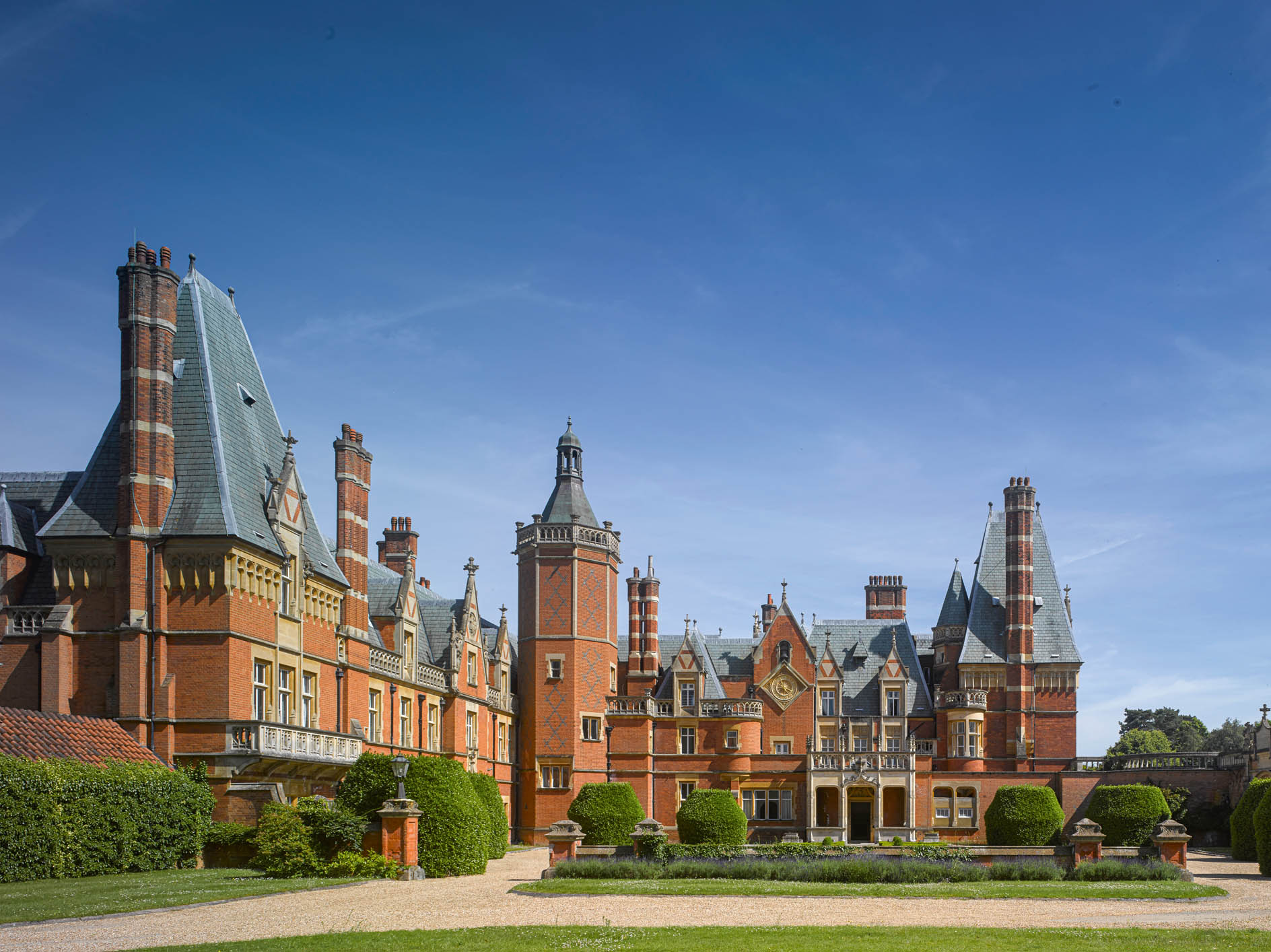
Ludlow was a relative backwater by contrast — which clearly constituted part of its charm to Anna — but even here change was inescapable. In 1852, she witnessed the public celebrations that accompanied the opening of the railway in the town and, later that year, experienced the realities of modern electioneering when she saw an ‘elegant gentleman’ canvassing a shopkeeper for the conservative vote and receiving in reply ‘the reproaches of a vulgar radical’.
By 5.30pm on the day of her arrival in Liverpool, Anna had travelled by boat to Birkenhead and ‘in a most comfortable car[riage] with four others’ to The White Lion at Shrewsbury. She marvelled in the course of this remarkably swift journey at ‘the wonderful solidity of the railways… the beauty of the country, the lovely hedges, the picturesque cottages, scattered on every side, the air of culture, of content, of prosperity’.
Next morning, she rose for the final leg of the trip at 4.30am and, about four hours later, passed through the lodge gates of Moor Park before driving ‘through the avenue, shaded by lofty oaks, with sometimes a lovely lawn… and glimpses of landscape breaking through’ to the house itself, ‘built of brick, covered here and there with ivy’. It was, in fact, an early-18th-century building and Anna’s description of it is prefaced by a short account of its owners, the Salwey family.

It is striking that Anna’s letters repeatedly enter into the historical details of the houses, castles and churches she visited. What she recounts was researched or quoted from authorities, in this case from Burke’s Peerage. Her care in this regard speaks of the enormous significance that antiquarianism — the study of the physical past — had assumed in Britain. Not only did the study fuel intense debates about architectural style (Fig 1), from which the Gothic Revival drew strength, but it was inextricably linked to the Romantic movement, as well as to ideas about political and social change.
Entering Moor Park, the visitor came to ‘a very large square hall panelled with oak to the ceiling, and the floor is of marble. In the centre stands a billiard table…’ Placing the table in this space made the game accessible to both sexes. Such arrangements would soon change, however, as life in houses became increasingly divided along lines of sex. By the 1870s, specially built billiard rooms began to be created, often as part of a male preserve that included a smoking room (Fig 7). Around the hall ‘hang the ancestors, prim gentlemen in wigs and stiff ladies in brocades’.
Exquisite houses, the beauty of Nature, and how to get the most from your life, straight to your inbox.
Opening off one side of the hall was the library, with a very dated collection of books assembled in the early 18th century. Later in her stay, Anna did sample some of these books, but declared herself too much of a ‘Goth’ to enjoy them and instead enjoyed the more romantic fare — presumably Walter Scott and such like — of ‘Mr Partridge’s circulating library’. The family also read American papers and magazines delivered each week by steamer. Anna took up the study of painting and German during her stay, but she resisted archery, a sport that enjoyed huge popularity, particularly among young ladies, in the 1850s.
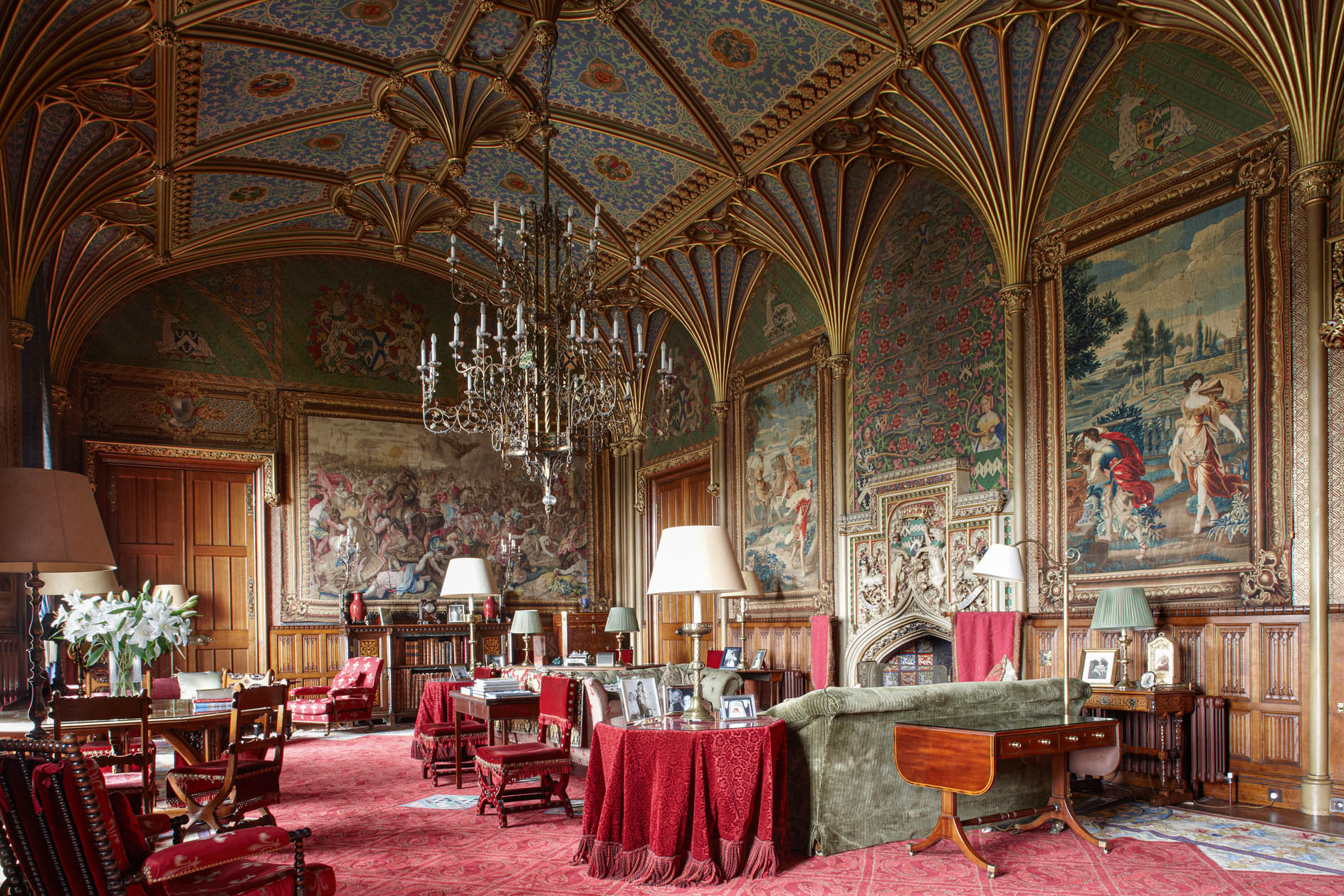
Beyond the library was an oak-panelled dining room with a table and buffet. On the other side of the hall were the ‘drawing rooms’, two interiors separated by folding doors (allowing them to be joined for formal entertainment) and furnished with ‘quite modern furniture’. That modernity was no coincidence. The Regency enthusiasm for new and comfortable kinds of furniture continued into the late 19th century. Nests of chairs and more exotic furnishings with fulsome upholstery, such as ottomans, for conversations and relaxation were now a commonplace. They made 18th-century furniture seem uncomfortable and redundant in a domestic setting.
It was in reference to such furniture that Anna describes the principal drawing room as ‘our sitting room, the windows of which command a lovely view’. The interior was coherently decorated with red curtains, red and yellow wallpaper and red upholstery. It was here that she passed her time and wrote part of her first letter, noting: ‘In front of the table where I sit is a case reaching to the ceiling on which are placed some curious stuffed birds and a wild cat (killed on the estate).’ Hunting trophies had been displayed in English houses since the 16th century, but the preservation of whole animals made possible the striking passage of specimens from scientific study to domestic decoration in the 19th century.
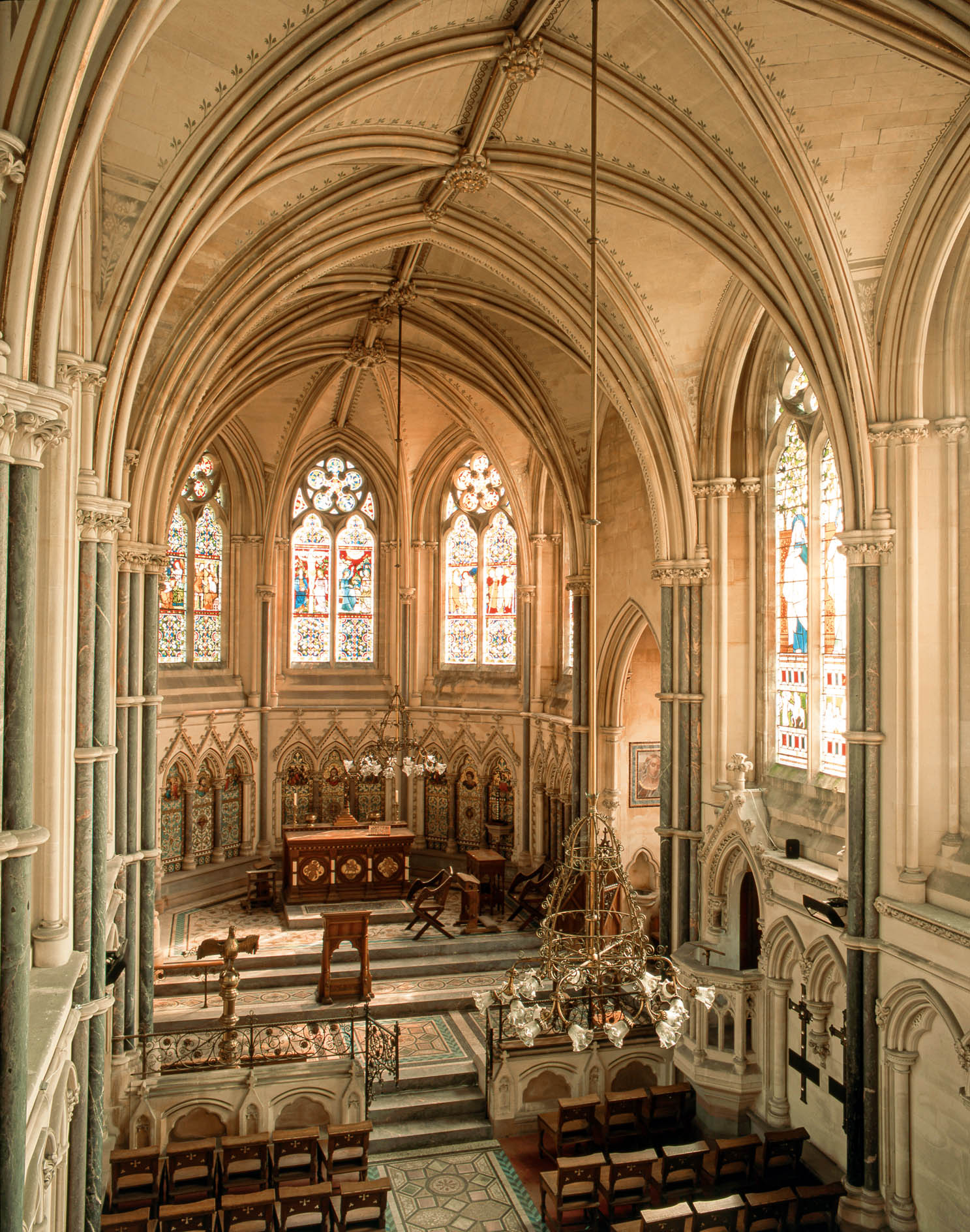
A conservatory, probably a recent addition to the house, created a covered garden space that was directly connected to the main rooms by means of two ‘boudoirs’, probably little more than small draft lobbies. At one end of the hall was a ‘broad’ staircase (Fig 8) to the ‘bedchambers on each side of a long corridor’. Her uncle had a ‘dressing-room hung with tapestry and adjoining is a sort of closet’, although Anna makes it clear that she didn’t see the inside of the closet. She shared her room, and probably the bed, with her visiting aunt. Its decoration was ‘entirely Chinese. The walls, the furniture, the china on the washstand, the curtains of the bed and windows…’; all presumably 18th-century survivals.
The household comprised ‘Miss Dodd, the governess; Fischer — Aunt Catherine’s German maid… the butler and a boy under him, the coachman… the gardener, the keeper, and the porter, the chambermaid, the laundry-maid, the cook, and the scullion’. Anna emphasises that this was a small household because — initially at least — her uncle ‘accepts no invitations’, having come to recover his health.
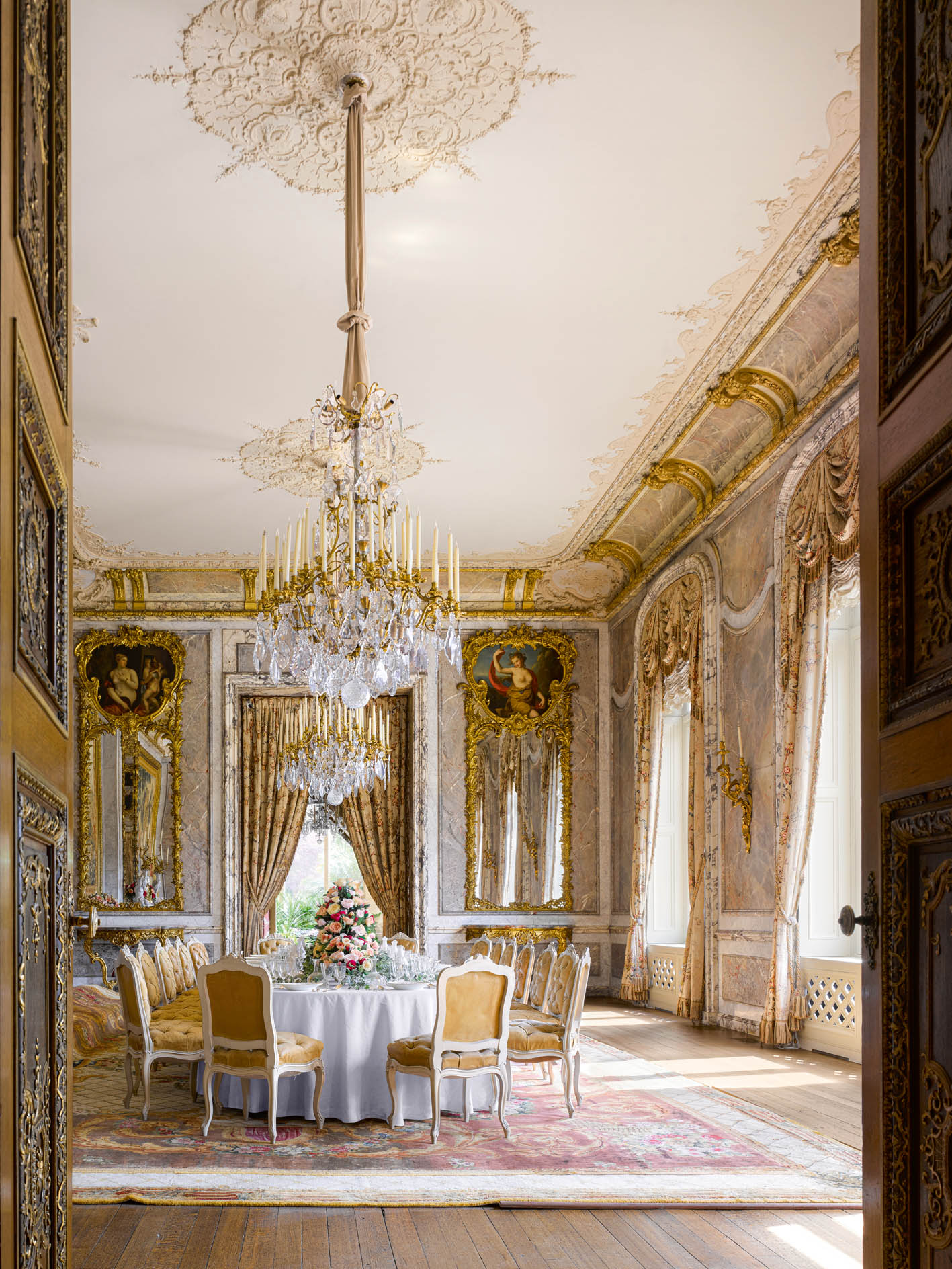
By contrast, great houses in this period had huge and ever-expanding bodies of servants organised by department — such as the kitchens, stables and gardens — into strict hierarchies and often with specialist responsibilities. Liveried male servants generally acted in public roles, with women working behind the scenes. Service arrangements expanded accordingly, with rooms for every kind of distinct task. The rambling service areas were connected by labyrinthine corridors and stairs to the polite rooms of the house. The division between the two was absolute and the move between them — through the proverbial ‘baize door’ — was expressed by the change from the functional to the opulent (Fig 4). Strictly segregated accommodation for male and female servants was also provided, often on upper floors of houses or in new wings.
Households need timetables to run to and Moor Park, for all its relative modesty of scale, was no exception. ‘We rise early at half-past seven, have prayers at half-past eight, and breakfast a quarter of an hour later. After breakfast the children go to their schoolroom… I write or sew until eleven or twelve, when we go out driving. Uncle Richard goes shooting… We lunch when we return, and at six we dine. In the evening we form a very cheerful party by the drawing room fire, reading or sewing, or playing games with the children.’ Riding was an important pastime and one of the first outings Anna made from the house was to attend a meet of the local hounds. She regularly attended churches and was interested in the conduct of services, as well as their architecture and music (Fig 5).
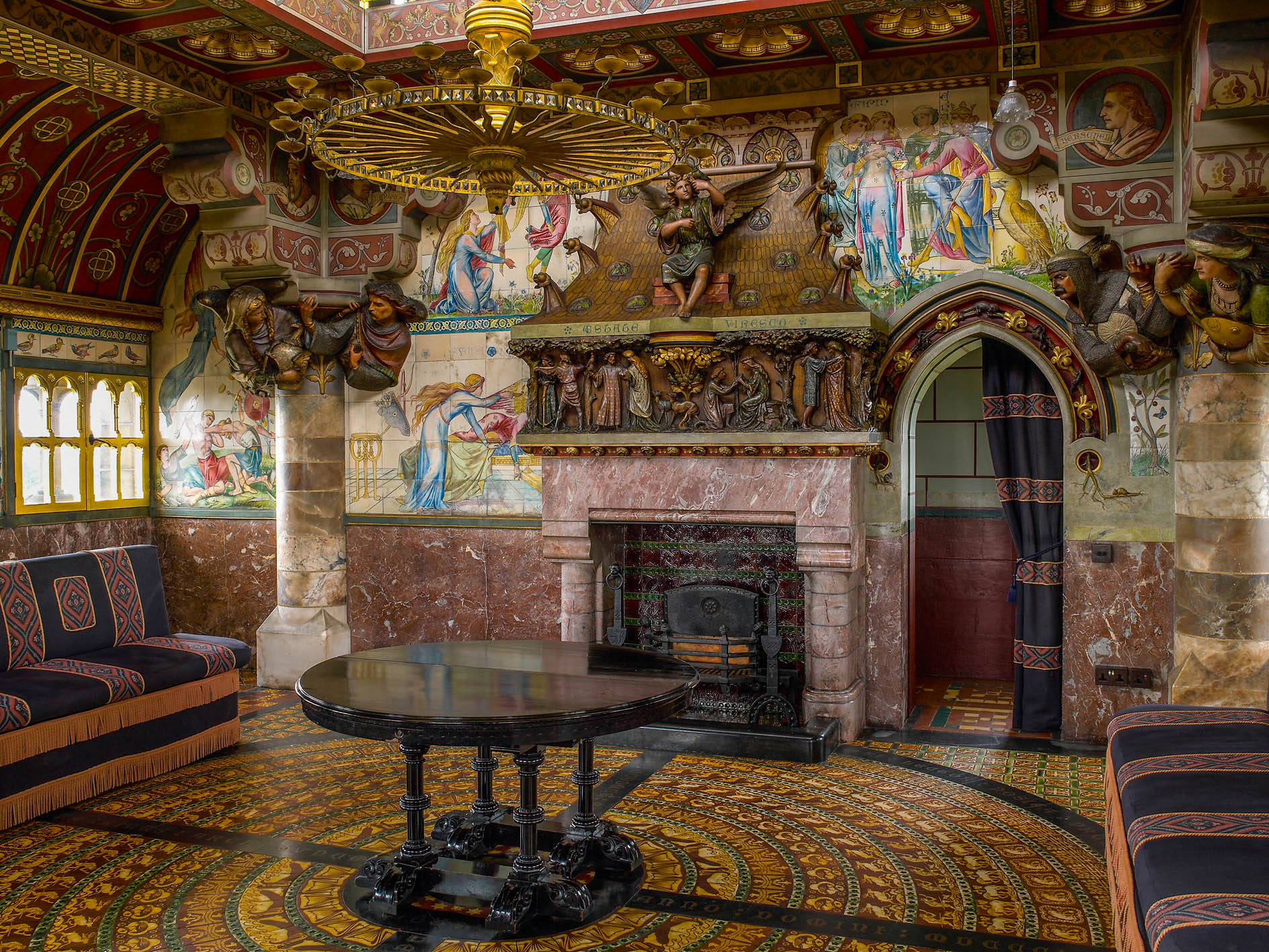
In provincial company, Anna discovered that it was considered ‘particularly genteel to be pale and slender’, which suited her own figure (although she kept putting on weight, which came to her as a pleasure). She struggled with the strictly observed convention of shaking hands vigorously upon arrival and departure from any group, as well as dinner conversation with local gentry on ‘the never-ending theme of poachers’, followed by minute accounts of the day’s shooting or hunting and platitudes about the weather. ‘They are not a very intellectual set,’ she concluded, ‘but they are very sociable and pleasant.’
Her first exposure to aristocratic society came with a dinner invitation from Harriet Clive, Lady Windsor, to nearby Oakly Park on New Year’s Day 1852. This was a much more modern house enlarged in two stages from 1819 and again in 1836. On arrival, her party was conducted into a library by liveried servants and ‘an elegant circle of ladies and gentlemen rose to meet us’.
No one introduced themselves, which meant that she only gradually discovered who their company was. When dinner was announced, the women were led into dinner in strict order of social precedence. Anna was impressed by the beauty of the jewellery and dresses of the women and also by the sophistication of the company, which was well travelled. She later expressed surprise that the Clive family was also well read in American literature.
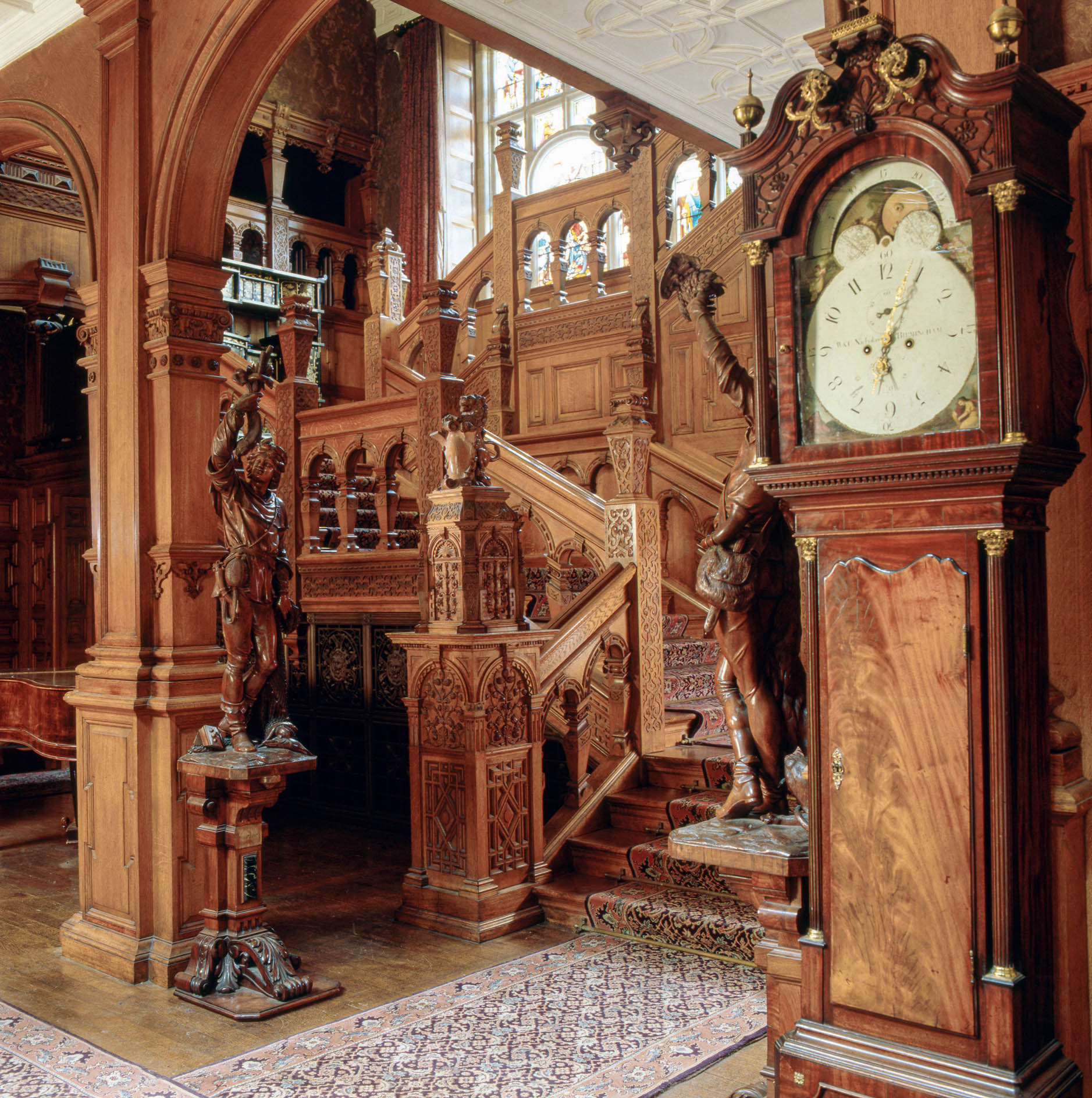
Grace was said before the party of 20 sat down at a long table splendidly dressed with a massive centrepiece and four candelabras (Fig 6). Soup was followed by several varieties of fish, meat and then game. Dishes were laid out on a sideboard and served at the table by the ‘portly butler in white vest and cravat and black coat’ and ‘about six footmen in red plush and blue coats’. The service was entirely of silver but dessert — including ‘ices and jellies… and every variety of fruit’ — was served on china. At the end of dinner: ‘A large cup with handles on each side filled with toasted ale is brought in, and the gentleman to whom it is given first takes a long draught, after which the footman passes it to the next.’
This ceremony of the loving cup completed, Lady Windsor gave the signal for the women to rise and they left the room in order of precedence. As the company passed through the hall, Anna was shown engravings of the Great Exhibition, which had recently closed. They continued to the drawing room and ‘coffee was brought in, and some of the ladies sat down to their beautiful worsted work’. Anna looked at watercolours with one of the daughters of the house and, when the gentlemen came in, music was performed. She was astonished that the company particularly delighted in what she termed ‘negro melodies’, including The Bluetail Fly, a thinly veiled attack on slavery.
Anna returned to America in late August 1852 on the steamer, first to live in New York and later Boston. She never came back to Moor Park and she wouldn’t have recognised it by the time she died unmarried in her nineties in 1922. The house was sold in 1873 to Johnstone Jonas Foster, whose fortune derived from his family’s textile industry. He transformed the Georgian house in a fashion typical of the late-Victorian period, adding high-pitch roofs in the French manner (Fig 2) and inserting windows with large plate-glass panes to lighten the interior. The main rooms were decorated in distinct period styles (Fig 3) and the plan re-ordered so the life of the family could continue in private rooms without interruption by staff or guests. Today, the building is a school. As the end of the century approached, however, technology and new tastes were reshaping domestic life, as we shall see in the next instalment.
Acknowledgements: Michael Hall
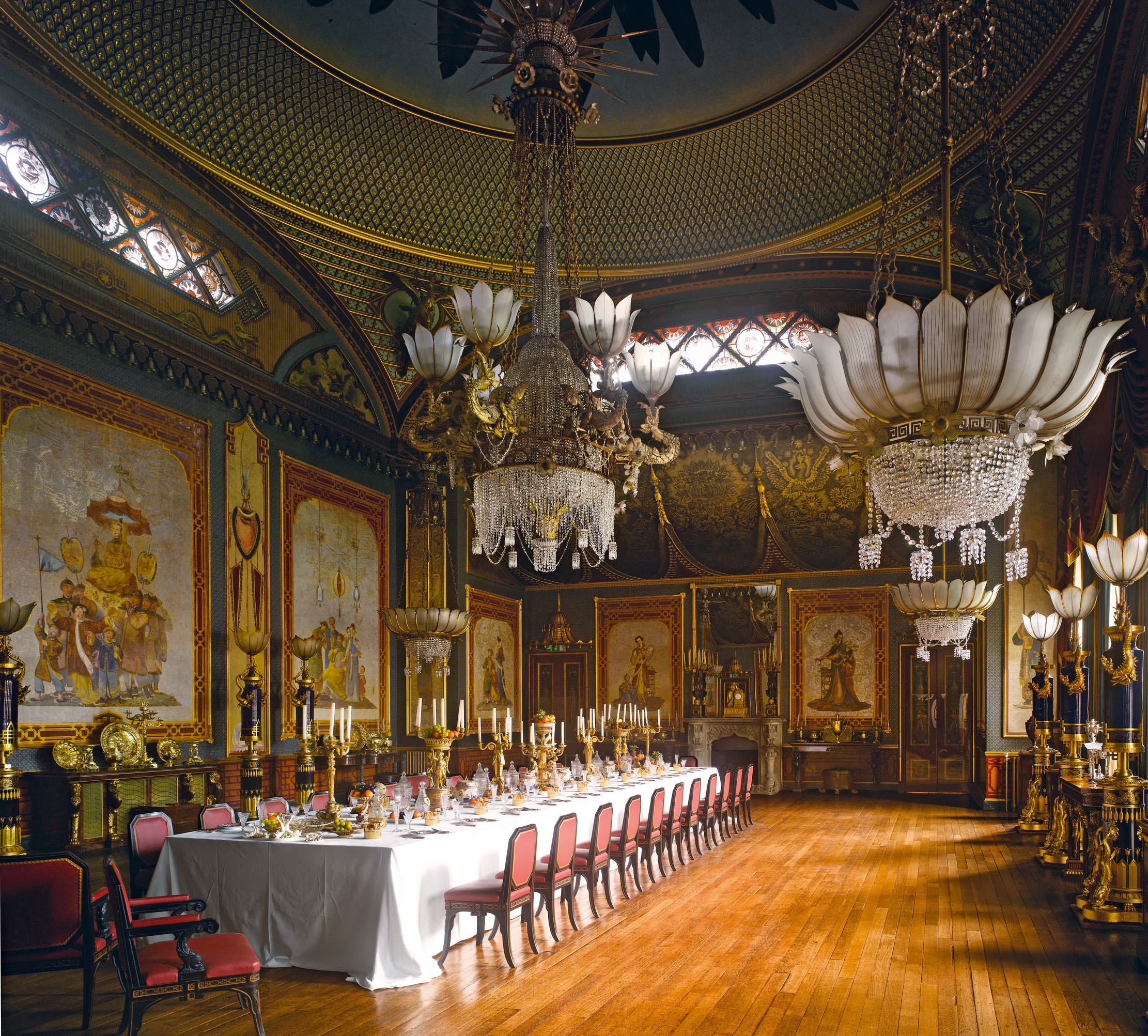
The English country house in the Regency period: Fashionable novelty and an unprecedented stylistic eclecticism
John Goodall looks at developments in the English house during the Regency period.

How the Glorious Revolution changed the nature of the English country house
John Goodall looks at the English home in the aftermath of the ‘Glorious Revolution’, in the latest in his series
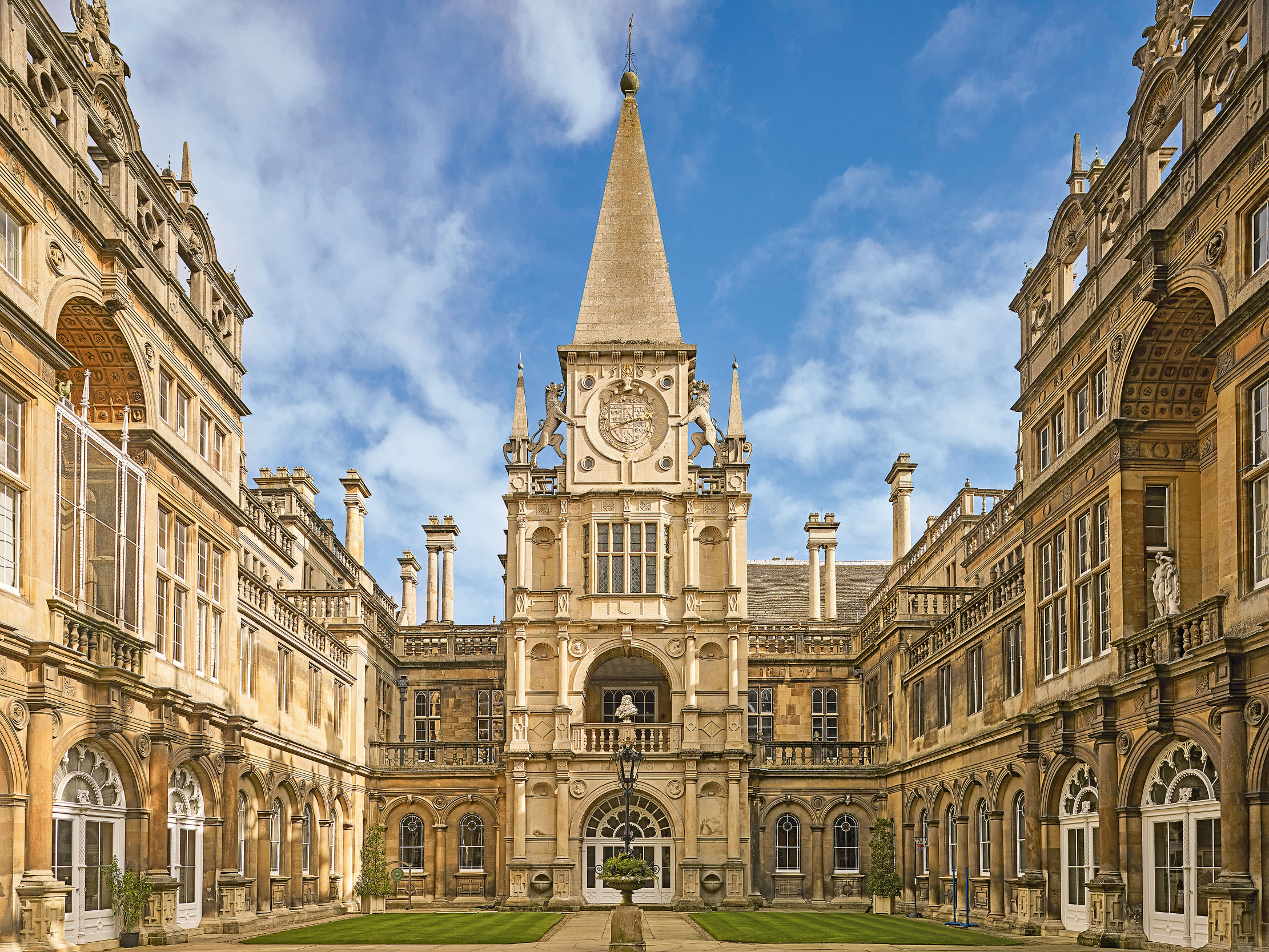
English houses in the age of Shakespeare: How late-Tudor and Jacobean architecture shaped the way we live
John Goodall looks at the architecture of late-Tudor and Jacobean homes in the period 1560-1630, taking a look at Engoish

John spent his childhood in Kenya, Germany, India and Yorkshire before joining Country Life in 2007, via the University of Durham. Known for his irrepressible love of castles and the Frozen soundtrack, and a laugh that lights up the lives of those around him, John also moonlights as a walking encyclopedia and is the author of several books.